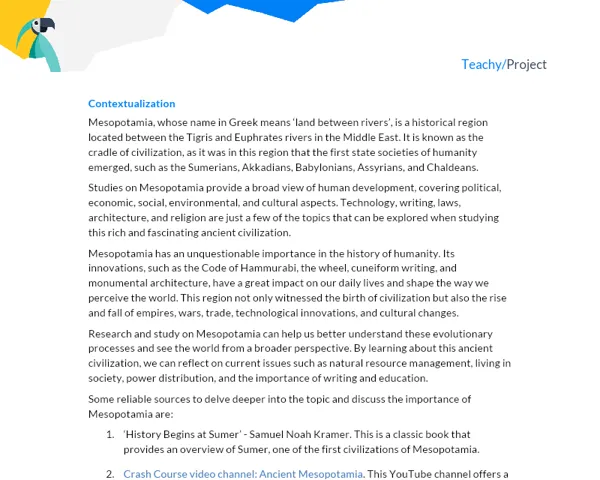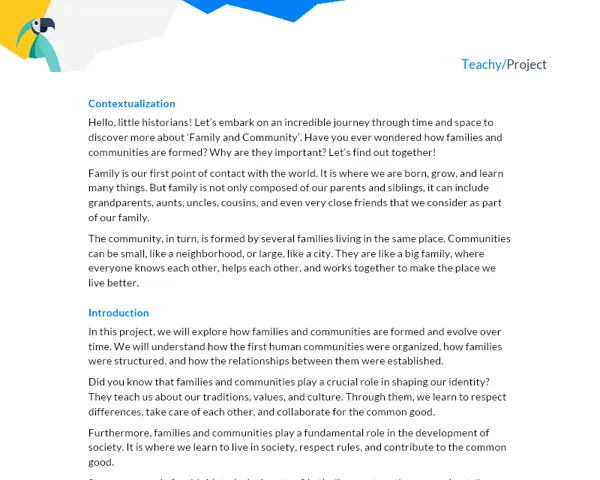Contextualization
Ancient Egypt is widely recognized as one of the world's earliest and longest-lasting civilizations, featuring globally renowned monuments such as pyramids, hieroglyphics, and pharaohs. However, there is much more to learn and explore about this incredible society.
What set Ancient Egypt apart from civilizations in Mesopotamia, India, and China is that it thrived for several millennia. This included the establishment of a centralized government, construction of pyramids, the invention of a writing system – hieroglyphics, and the development of an elaborate form of art.
Introduction
The civilization of Ancient Egypt, one of the world’s earliest and longest-lasting, spanned more than 3,000 years, from its consolidation as a unified kingdom around 3100 BCE to its conquest by the Roman Empire in 30 BCE. During this vast stretch of time, it experienced substantial development in many areas, from its political and social structures to advances in art, architecture, and science.
Ancient Egyptian society was rigidly hierarchical, with a pharaoh and his administration ruling over a largely agrarian population. The mighty Nile River played a crucial role in the lives of the ancient Egyptians, providing a vital source of water, irrigation, and transportation, as well as shaping their religious beliefs.
Additionally, the ancient Egyptians possessed a rich culture with complex religious beliefs, an innovative writing system known as hieroglyphics, and impressive architectural achievements including the famous pyramids and temples.
Project-Based Learning: “Exploring Ancient Egypt”
Project Goal
This project aims to deepen students' understanding of the cultural, social, political, and economic dimensions of Ancient Egypt, thereby developing a richer and more contextualized view of this ancient society.
Project Description
Each group will be responsible for developing a virtual "Museum of Ancient Egypt." Within this museum, students should address the following topics:
- The geography of Ancient Egypt and the importance of the Nile River
- The political and social structure (pharaohs, nobles, scribes, artisans, peasants, slaves)
- Key religious practices and beliefs
- The agriculturally based economy
- The arts and architecture with a particular focus on the pyramids and the temples
- The invention of hieroglyphic writing
Materials
- Computer with internet access for conducting research and building the virtual museum
- Image editing software such as Canva, Adobe Illustrator or Photoshop
- Website building platform such as Wix, WordPress, or Google Sites
Step-by-Step Instructions
- Divide the class into groups of 3 to 5 students.
- Groups should begin by conducting desk research on the provided topics using the suggested resources and other credible sources.
- Based on their research, students should plan out their "Museum of Ancient Egypt", determining what content and imagery they will use to represent each topic.
- Next, students should begin to create their virtual museum using their chosen website builder.
- The museum should be organized into different “rooms” or pages, each of which focuses on one of the provided topics and is furnished with explanatory text, images, infographics, videos, etc.
- Groups should then present their museums to the class, explaining each of the “rooms” and their content.
- Finally, students should produce a detailed project report following the suggested outline with four main sections: Introduction, Development, Conclusions, and Bibliography.
Project Deliverables
This project will have the following deliverables:
- A virtual “Museum of Ancient Egypt” to be shared with the class and the teacher.
- An oral presentation of the museum to the class
- A written project report
The report should document the entire process of creating the museum from initial research to the final presentation. The introduction should provide context for the project, explaining the significance of Ancient Egypt and the purpose of the project. The body should detail the research, the methodology used to create the museum, and a discussion of the outcomes. The conclusion should restate the project's main points, reflecting on what was learned and the impact of the project. Finally, the bibliography should document all sources consulted during the project.
This project is expected to take approximately 12+ hours per student to complete and involves the utilization of skills from different disciplines, including History and Visual Arts as well as teamwork, time management, communication, problem-solving, and creative thinking.


